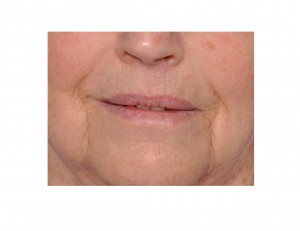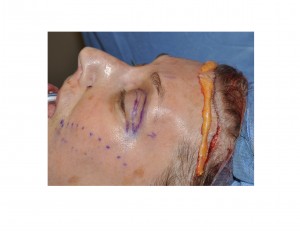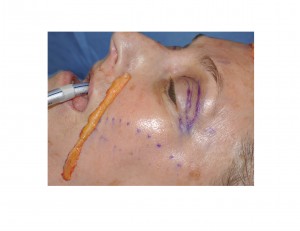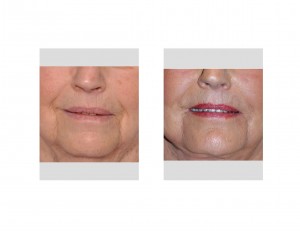Background: The aging face is marked by many soft tissues changes due to falling tissues. One of those visible aging signs is that of the deepening nasolabial fold. This fold or groove is caused by the sides of the face falling against the fixed tissue of the upper lip. This creates an overhang of facial skin that rolls over toward the lip. As more tissue falls forward, the nasolabial fold gets deeper.
Treatment of the deep nasolabial fold has always been a difficult challenge, particularly at the time of a facelift procedure. No maneuver done underneath a facelift flap has been consistently successful. The pull from the repositioned skin flap during a facelift does not produce a sustained improvement. Even with release of its dermal attachments and the backward pull of the skin flap, nasolabial fold improvement is surprisingly modest.
The only non-surgical treatment, and by far the most common, for nasolabial fold reduction is the use of injectable fillers. This consistently shows that the addition of volume underneath the fold is an effective treatment. The problem with all synthetic fillers is that they are not permanent. Fat injections have been repeatedly tried for more permanent filling of the nasolabial fold but this unfortunately does not work due to fat absorption.




Case Highlights:
1) The deep and very visible nasolabial fold is most commonly treated by volume enhancement to soften its appearance.
2) The most ideal material to put underneath a nasolabial fold is some form of autogenous fat, with a dermal-fat graft being preferable to injected fat.
3) The tissue normally discarded from a pretrichial (hairline) browlift is ideal in thickness and length to make for dermal-fat grafts to the nasolabial folds.
Dr. Barry Eppley
Indianapolis, Indiana


